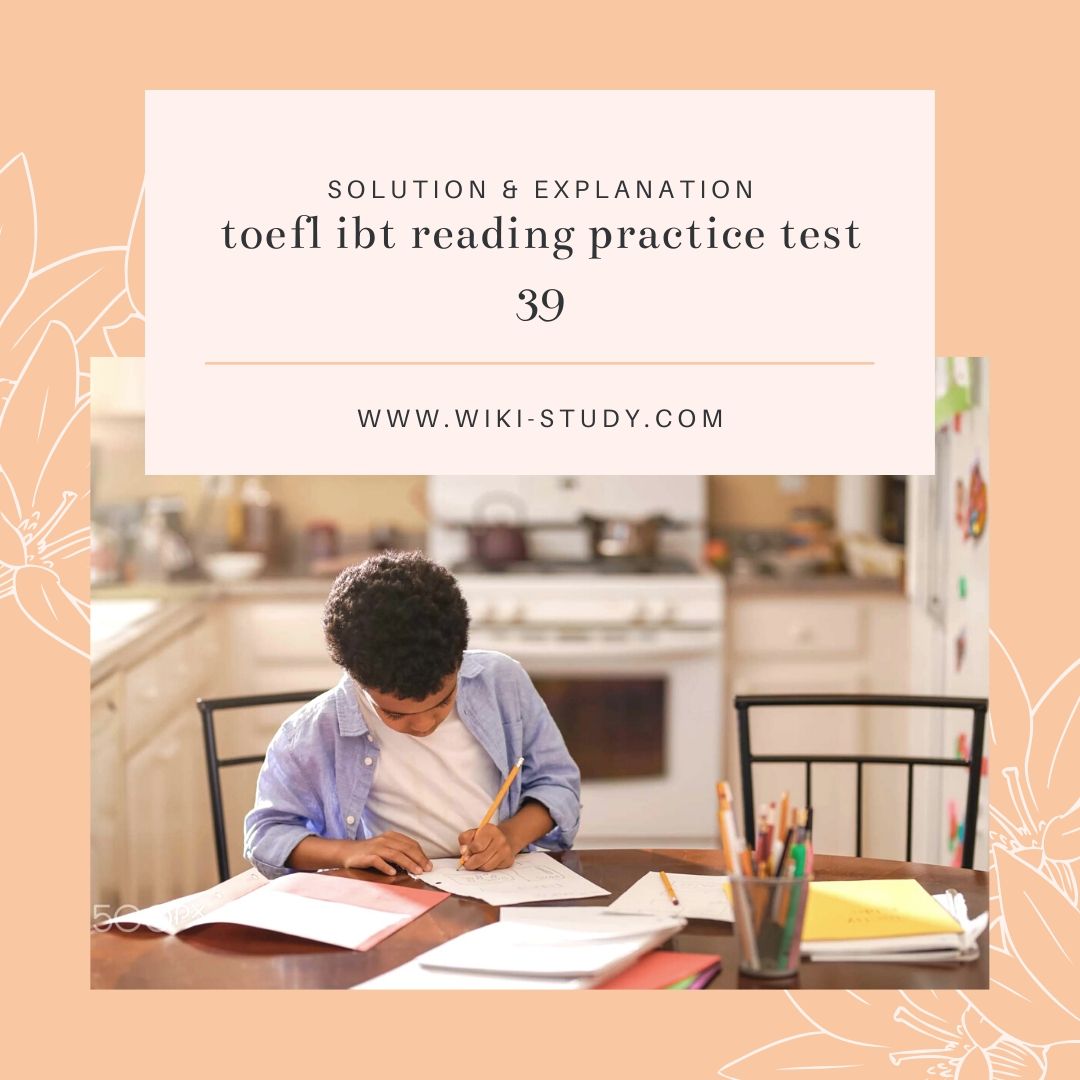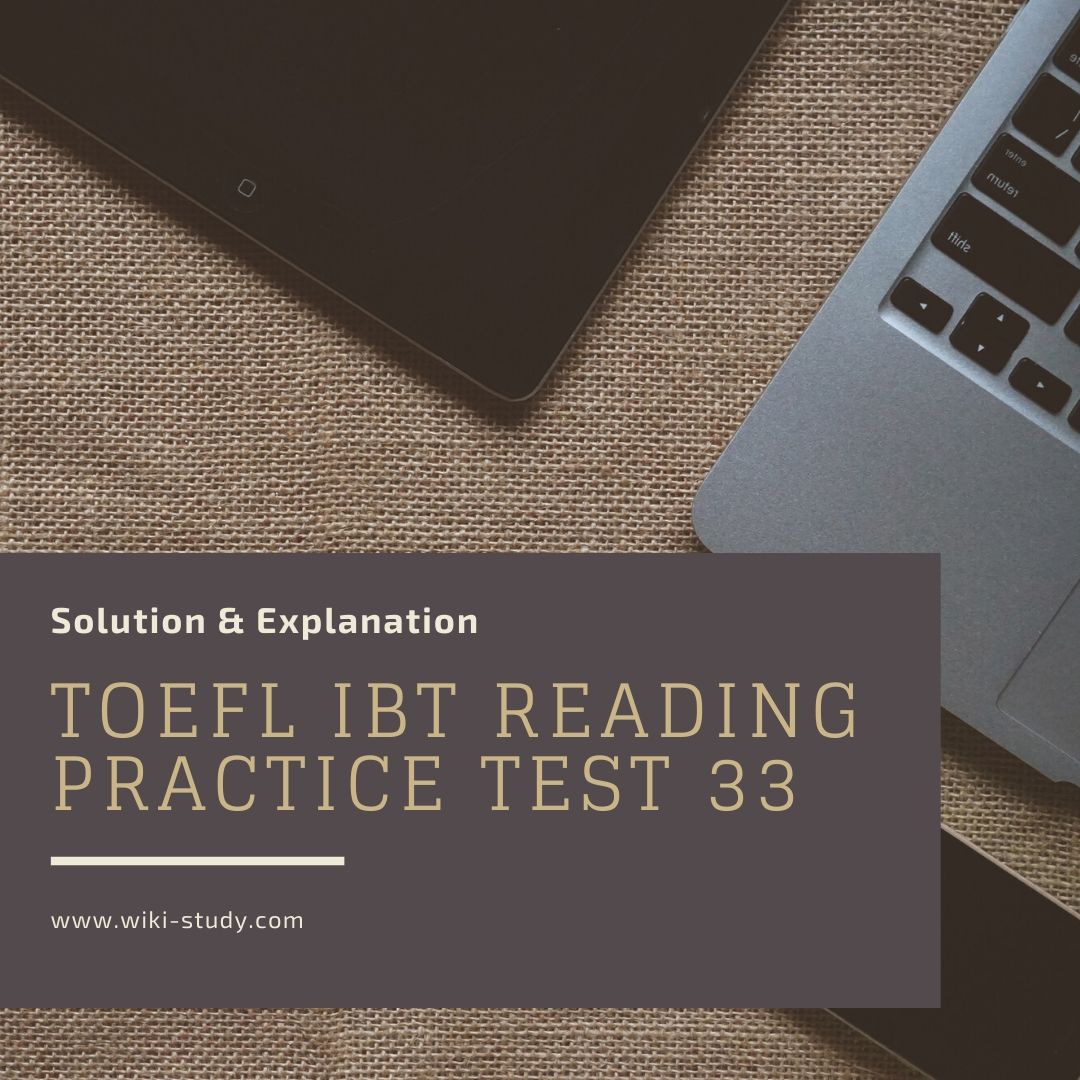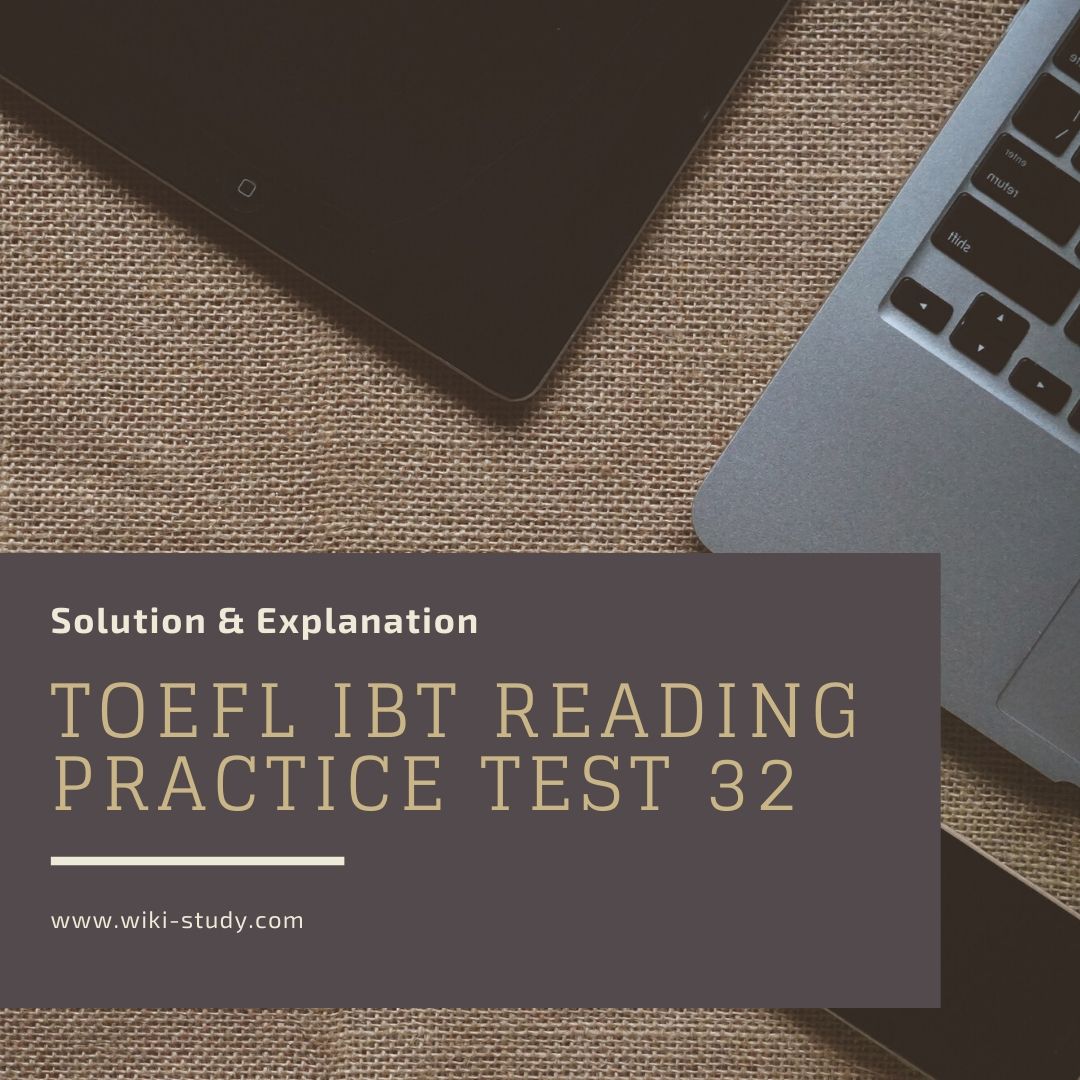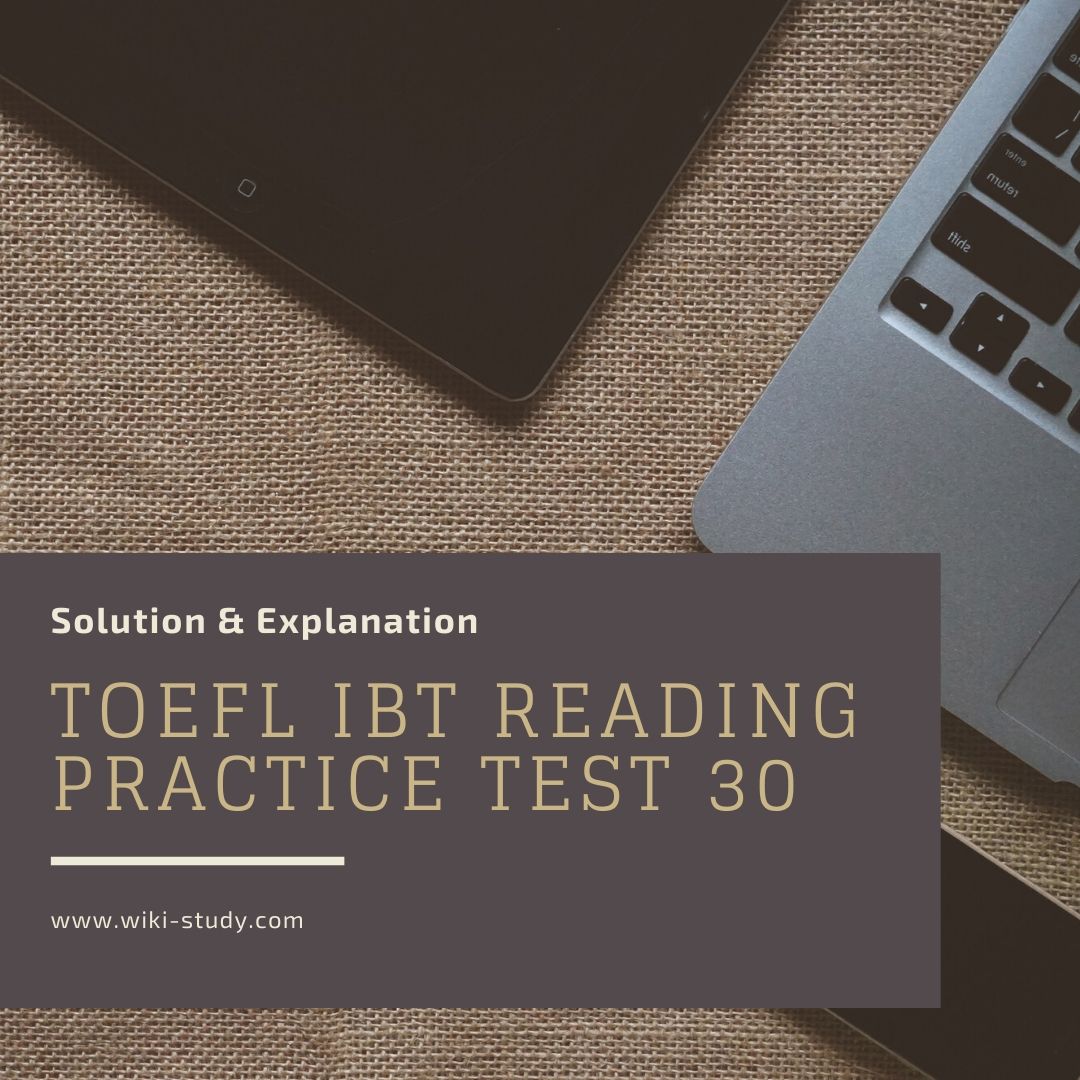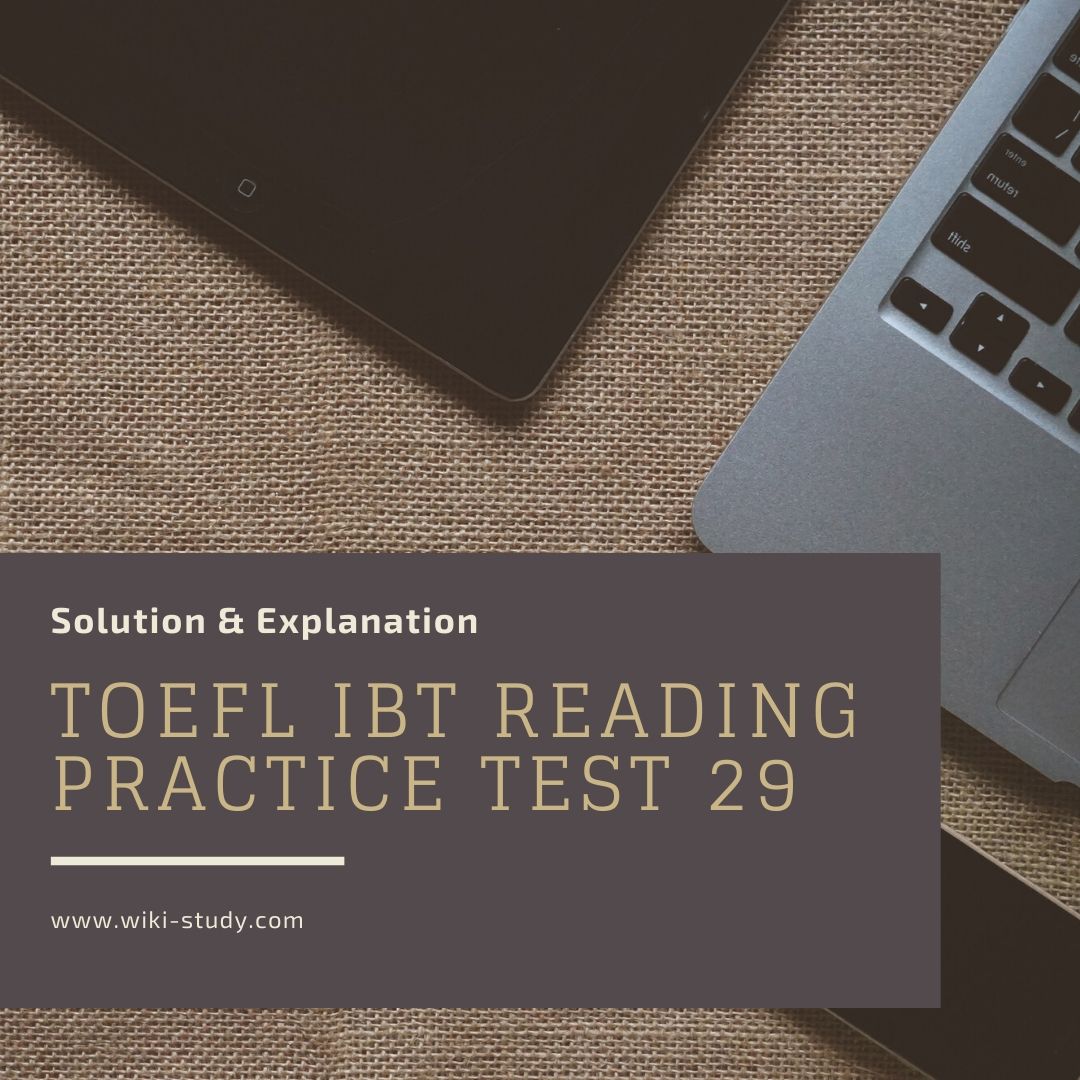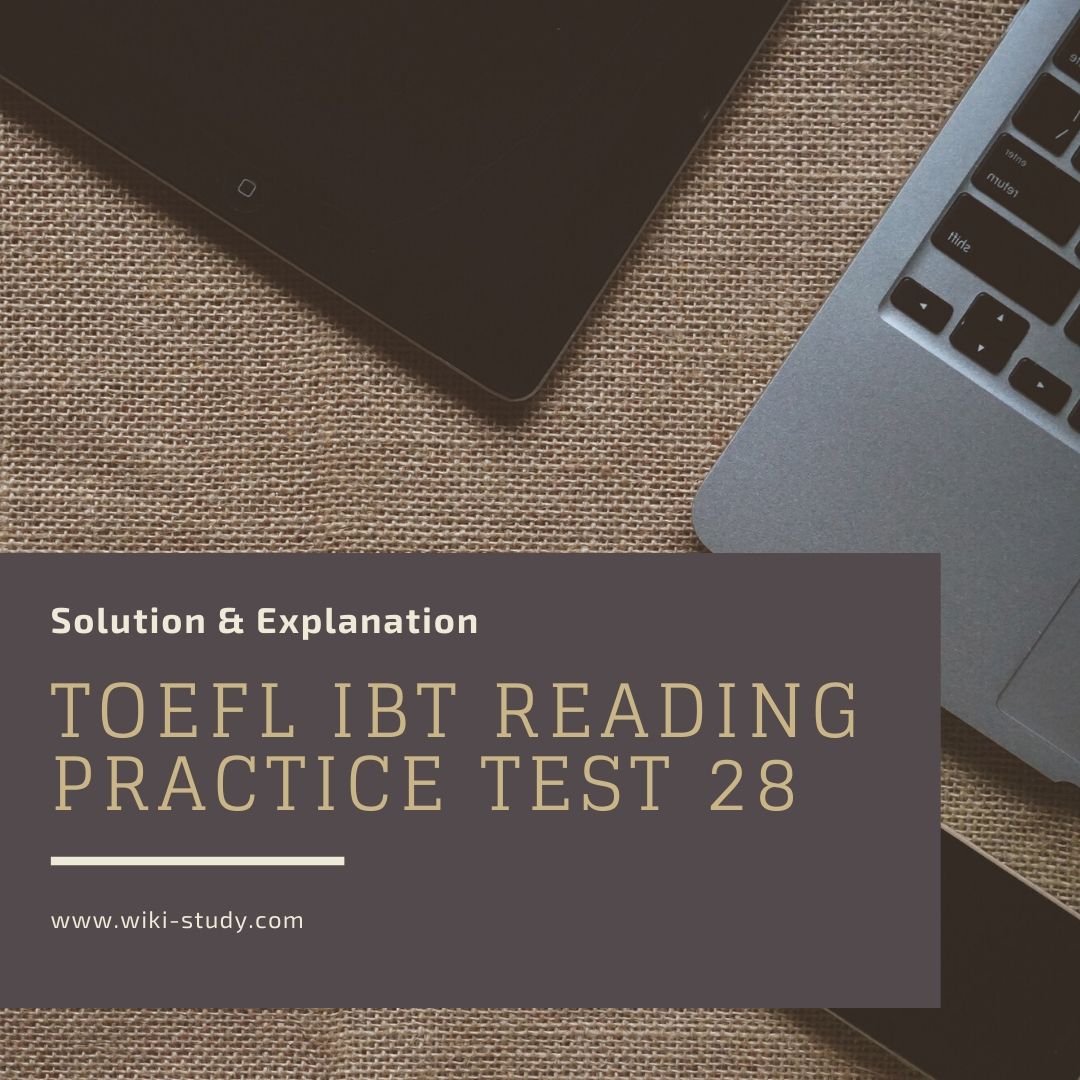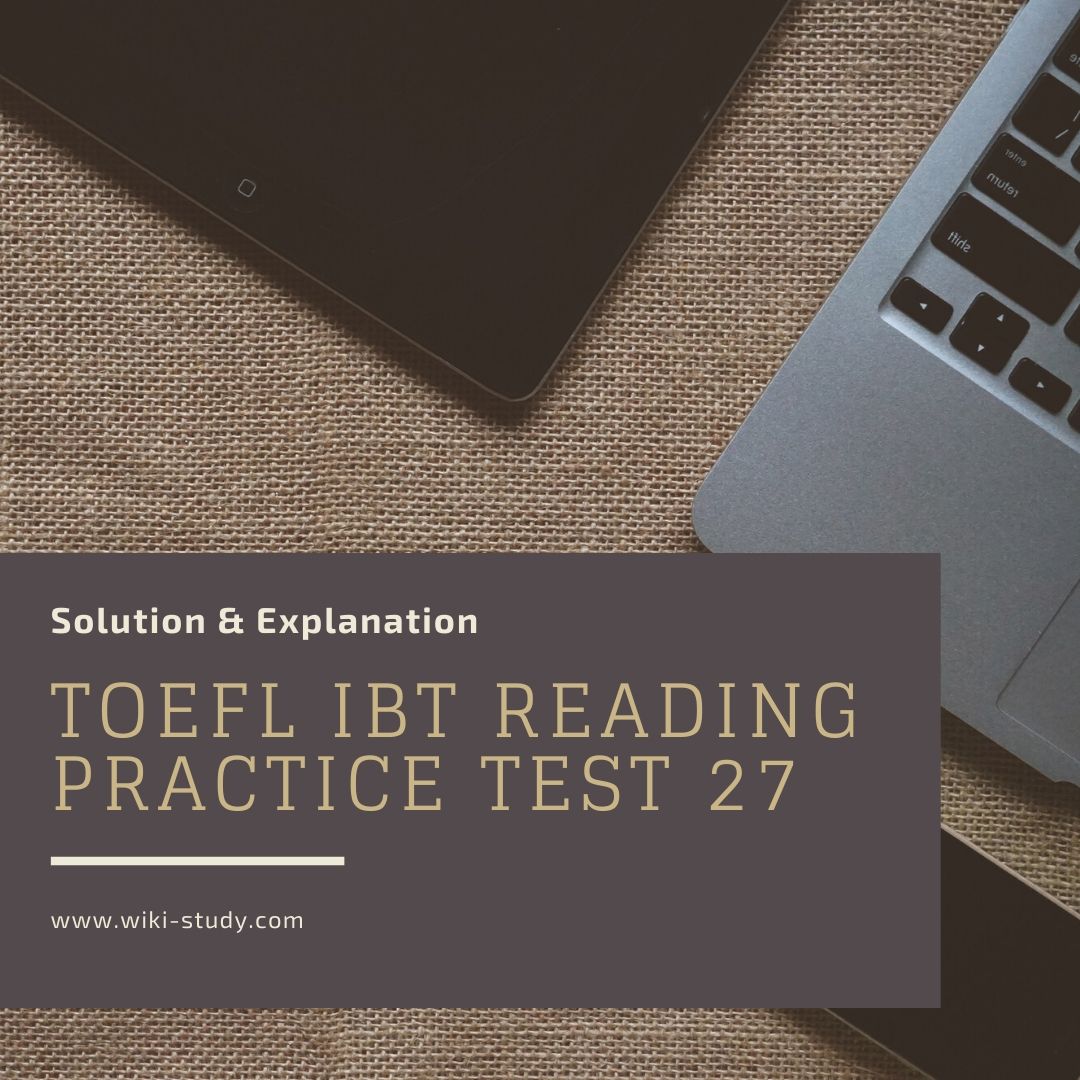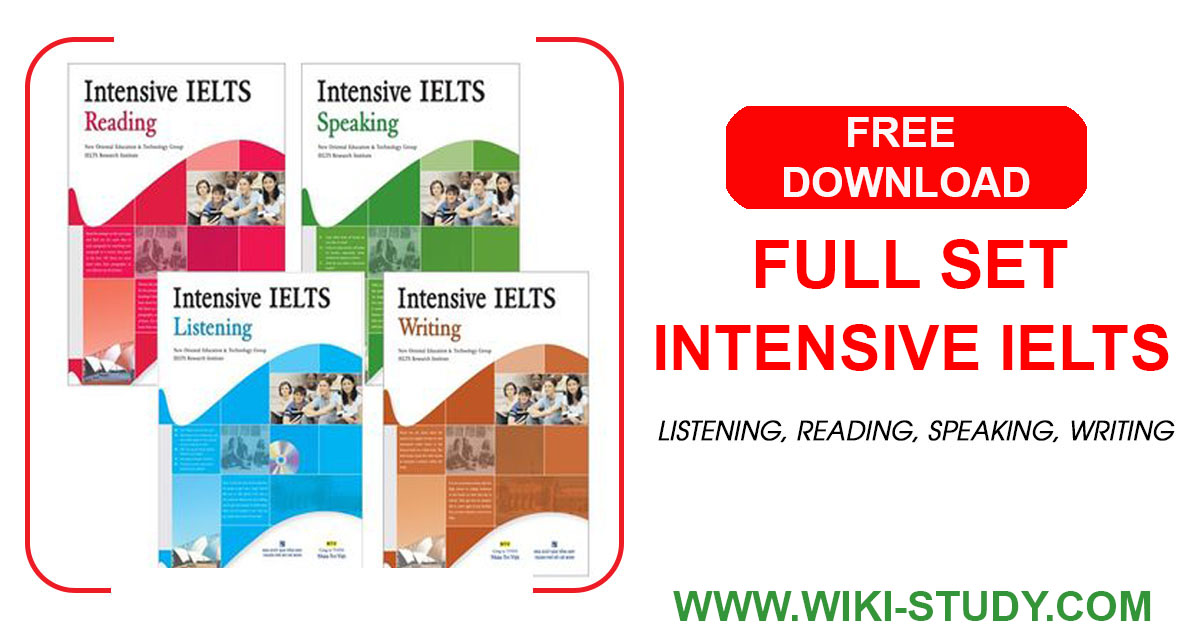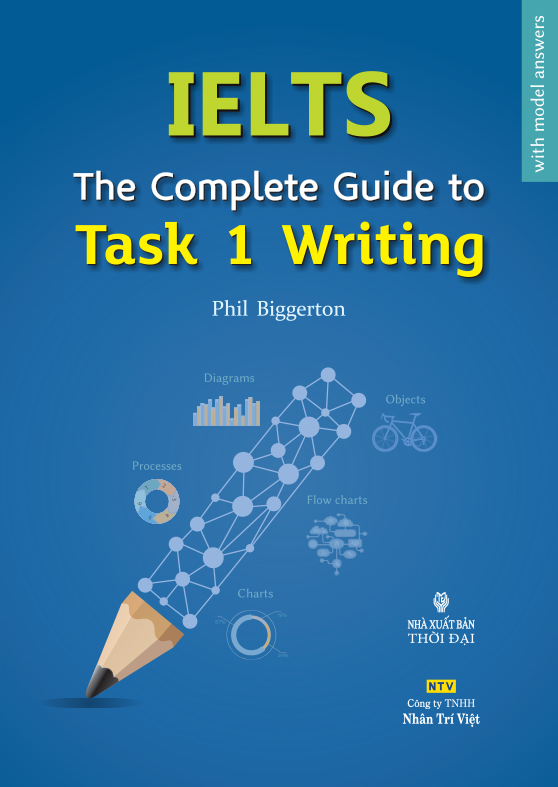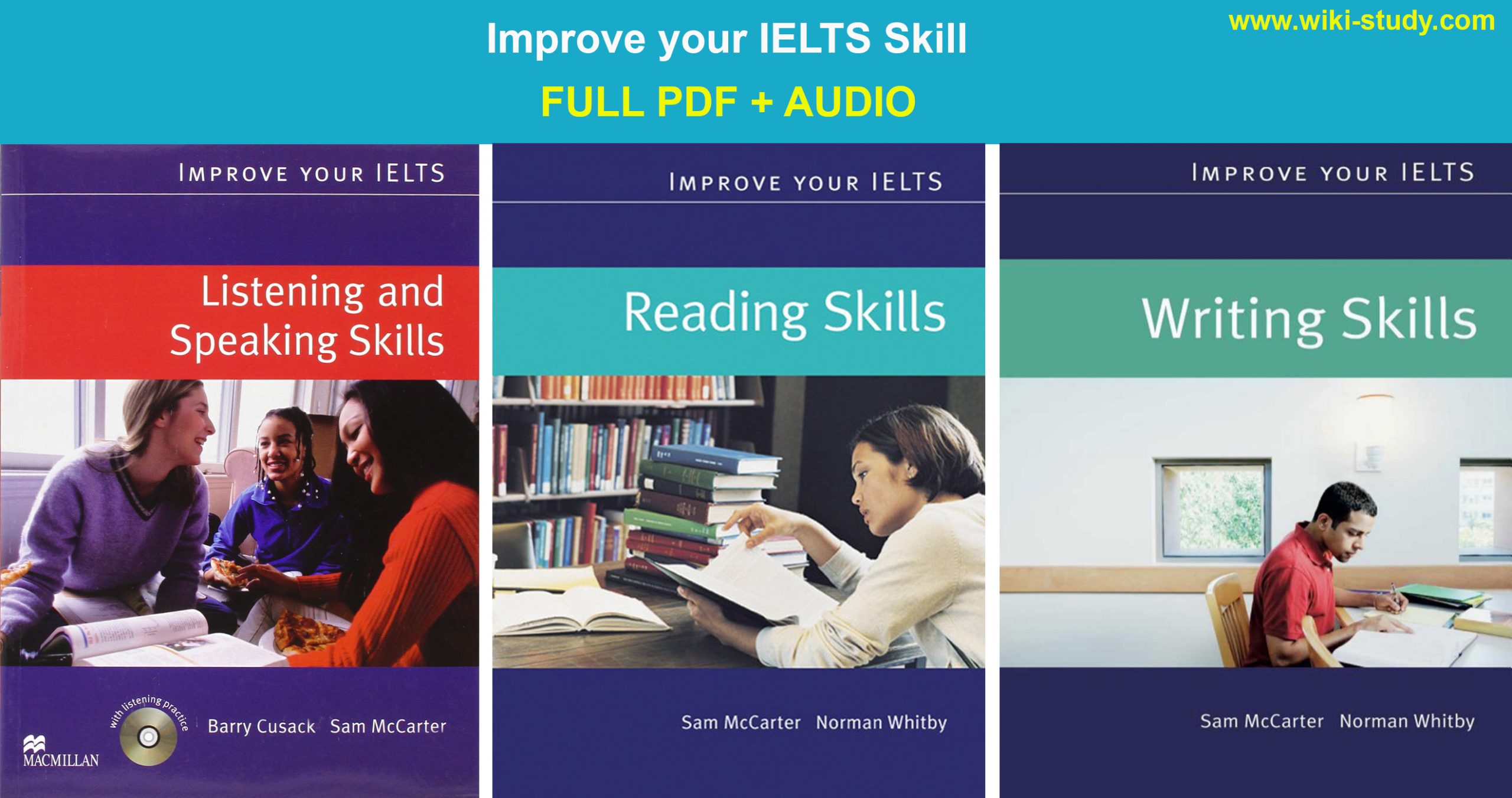Architecture
1. [4] This is a Negative Factual Information question asking for specific information that can be found in paragraph 1. The correct answer is choice 4. Sentence 3 in the paragraph states that “architecture affects our lives most directly/’ which makes the information in choice 4 incorrect. The information in choices 1 to 3 is stated in sentences 1 and 2 in the paragraph.
2. [2] This is a Vocabulary question. The word being tested is enhance. It is highlighted in the passage. The correct answer is choice 2, “improve.” In other words, humans seek structures that will improve, or better, their lives.
3. [3] This is a Vocabulary question. The word being tested is feasible. It is highlighted in the passage. The correct answer is choice 3, “achievable.” In other words, buildings contribute to human life when they are economically achievable, or possible.
4. [4] This is a Sentence Simplification question. As with all of these questions, a single sentence in the passage is highlighted:
In order for the structure to achieve the size and strength necessary to meet its purpose, architecture employs methods of support that, because they are based on physical laws, have changed little since people first discovered them—even while building materials have changed dramatically.
The correct answer is choice 4. Choice 4 contains all of the essential information in the highlighted sentence. It omits the information from the introductory phrase about the size and strength of a structure because the information is not essential to the meaning of the sentence.
Choices 1, 2, and 3 are all incorrect because they change the meaning of the highlighted sentence. Choice 1 is incorrect because it inaccurately states that physical laws have limited the size and strength of buildings, whereas the highlighted sentence does not indicate this.
Choice 2 is incorrect because it wrongly makes a connection between building materials and building strength and size, whereas the highlighted sentence does not make such a connection.
Choice 3 is incorrect because it wrongly states that the structural methods initially used by people were not based on physical laws, whereas the highlighted sentence states that structural methods that are based on physical laws have been in use since their discovery.
5. [2] This is a Vocabulary question. The word being tested is devised. It is highlighted in the passage. The correct answer is choice 2, “created.” In other words, the world’s architectural structures have also been created, or made, in relation to the objective limitations of materials.
6. [1] This is a Vocabulary question. The word being tested is integral. It is highlighted in the passage. The correct answer is choice 1, “essential.” In other words, materials and methods of construction are essential, or vital, parts of the design of architectural structures.
7. [2] This is a Factual Information question asking for specific information that can be found in paragraph 4. The correct answer is choice 2. Sentence 3 in the paragraph indicates that in the past, structures were built using the available materials. However, sentence 4 in the paragraph indicates that today new materials can be created as needed depending on the design of the structure. Choice 1 is incorrect because sentence 5 in the paragraph indicates that there have been substantial changes in materials and designs in the recent past. Choice 3 is incorrect because sentence 4 in the paragraph indicates that there are many types of materials available today. Choice 4 is incorrect because sentence 5 in the paragraph indicates that it is possible to enclose space more quickly and easily than in the past. It does not indicate that architects were not able to enclose space.
8. [3] This is an Inference question asking for an inference that can be supported by paragraph 4. The correct answer is choice 3. Sentence 5 in the paragraph states that structures are now created with a minimum of material, and sentence 6 indicates that there is a difference in weight between buildings being built now and those that were built one hundred years ago. The combined information from these two sentences suggests that modem buildings weigh less than buildings constructed one hundred years ago. Choice 1 is incorrect because there is no discussion of the amount of space that buildings constructed in the past or those built now occupy. Choice 2 is incorrect because sentence 5 in the paragraph states that substantial changes have been made to modem buildings compared with buildings constructed one hundred years ago. Choice 4 is incorrect because sentence 5 in the paragraph indicates that modem buildings can be built more quickly than those built one hundred years ago.
9. [4] This is an Inference question asking for an inference that can be supported by paragraph 5. The correct answer is choice 4. The reader is required to connect the information in sentences 1 and 3 in the paragraph. Sentence 1 indicates that modern architecture has several components comparable to the human body, whereas sentence 3 indicates that early architecture had few such components. The information in these two sentences suggests that modem buildings more closely resemble the human body than earlier buildings do. Choice 1 is incorrect because sentence 1 in the paragraph indicates that there are three components of modern architecture (skeleton, skin, equipment) that resemble the human body, not just one. Choice 2 is incorrect because sentence 3 in the paragraph states that early architecture did not have interior equipment, which is one of the three particular elements discussed in the paragraph as being comparable to the human body. Choice 3 is incorrect because there is no discussion or implication of how modern buildings or the human body may change.
10. [1] This is a Vocabulary question. The word being tested is arduous. It is highlighted in the passage. The correct answer is choice 1, “difficult.” In other words, cutting and piling stone upon stone was a difficult, or demanding, task.
11. [3] This is a Rhetorical Purpose question. It is asking why the author includes the description of how the “doorways and windows” of Machu Picchu were constructed. The phrase being tested is highlighted in the passage. The correct answer is choice 3. The author discusses the stone structures used to support doorways and windows in order to provide an example of how the physical limitations of stone were overcome before the invention of the arch. Choice 1 is incorrect because there is no comparison made in the passage between the buildings of Machu Picchu and igloos and adobe structures. Choice 2 is incorrect because, while the passage does state that stone was used in the buildings of Machu Picchu, it never discusses the kind of stone used. Choice 4 is incorrect because there is no discussion of the time needed to construct buildings from stone.
12. [2] This is a Factual Information question asking for specific information that can be found in paragraph 6. The correct answer is choice 2. Sentences 5 and 6 in the paragraph indicate that the arch allowed new architectural forms to be created. The remainder of the paragraph elaborates on structures created as a result of the arch. Choice 1 is incorrect because sentence 7 in the paragraph indicates that early Mediterranean cultures were the first to use the arch, not the Romans. Choice 3 is incorrect because sentence 10 in the paragraph indicates that the weight of a structure is distributed to the sides of the arch. Choice 4 is incorrect because sentence 7 indicates that the Romans created new uses for the arch, namely in aboveground structures.
13. [4] This is an Insert Text question. You can see the four black squares in paragraph 5 that represent the possible answer choices here.
■ Modern architectural forms generally have three separate components comparable to elements of the human body: a supporting skeleton or frame, an outer skin enclosing the interior spaces, and equipment, similar to the body’s vital organs and systems. ■ The equipment includes plumbing, electrical wiring, hot water, and air-conditioning. ■ Of course in early architecture—such as igloos and adobe structures—there was no such equipment, and the skeleton and skin were often one. ■
The sentence provided, “However, some modem architectural designs, such as those using folded plates of concrete or air-inflated structures, are again unifying skeleton and skin,” is best inserted at square 4.
Square 4 is correct because it is the only place that supports both a contrasting idea and a repeated reference to the unification of skeleton and skin. The inserted sentence represents a contrast to the main idea of the paragraph. The inserted sentence also contains the phrase “again unifying skeleton and skin,” indicating that there must be a previous discussion related to unifying the skeleton and skin of a structure. Square 4 is the only place in this paragraph that follows such a discussion.
None of the other answer choices follows a discussion of the unifying of a structure’s skeleton and skin, nor do the other answer choices provide a suitable point of contrast for the insert sentence.
14. [1] [3] [6] This is a Prose Summary question. It is completed correctly below. The correct choices are 1, 3, and 6. Choices 2, 4, and 5 are therefore incorrect.
Directions: An introductory sentence for a brief summary of the passage is provided below. Complete the summary by selecting the THREE answer choices that express the most important ideas in the passage. Some answer choices do not belong in the summary because they express ideas that are not presented in the passage or are minor ideas in the passage. This question is worth 2 points.
Architecture uses forms and space to express cultural values.
• Architects seek to create buildings that are both visually appealing and well suited for human use.
• Over the course of the history of building, innovations in materials and methods of construction have given architects ever greater freedom to express themselves.
• The discovery and use of the arch typifies the way in which architecture advances by developing more efficient types of structures.
1. Architects seek to create buildings that are both visually appealing and well suited for human use.
2. Both clients and architects are responsible for the mediocre designs of some modern buildings.
3. Over the course of the history of building, innovations in materials and methods of construction have given architects ever greater freedom to express themselves.
4. Modern buildings tend to lack the beauty of ancient stone buildings such as those of Machu Picchu.
5. Throughout history buildings have been constructed like human bodies, needing distinct “organ” systems in order to function.
6. The discovery and use of the arch typifies the way in which architecture advances by developing more efficient types of structures.
Correct Choices
Choice 1, “Architects seek to create buildings that are both visually appealing and well suited for human use,” is correct because it is a broad statement that is developed in the first two paragraphs. The first two paragraphs discuss in detail how architecture can affect and possibly improve people s lives.
Choice 3, “Over the course of the history of building, innovations in materials and methods of construction have given architects ever greater freedom to express themselves,” is correct because it is a general statement that is developed in paragraphs 3 and 4. These paragraphs discuss in detail how materials and methods have changed and improved over the history of building, continually providing architects the chance to create new designs.
Choice 6, “The discovery and use of the arch typifies the way in which architecture advances by developing more efficient types of structures,” is correct because it captures the main idea of paragraph 6, which provides a lengthy discussion of the ways that the arch has allowed new architectural forms to be created.
Incorrect Choices
Choice 2, “Both clients and architects are responsible for the mediocre designs of some modern buildings,” is incorrect because it is only a minor, supporting detail, which is mentioned in the last sentence of paragraph 2. It supports the larger idea in the paragraph that the quality of an architectural design depends on a variety of factors.
Choice 4, “Modem buildings tend to lack the beauty of ancient stone buildings such as those of Machu Picchu,” is incorrect because there is no discussion in the passage of the level of attractiveness of modem buildings.
Choice 5, “Throughout history buildings have been constructed like human bodies, needing distinct ‘organ’ systems in order to function,” is incorrect because paragraph 5 states that early architecture did not have equipment, such as plumbing and wiring, that is comparable to vital organs in the human body.
The Long-term Stability of Ecosystems
l. [3] This is a Vocabulary question. The word being tested is particular. It is highlighted in the passage. The correct answer is choice 3, “specific.” In other words, the specific structure of plant communities depends on the history of the area.
2. [3] This is a Negative Factual Information question asking for specific information that can be found in paragraph 1. The correct answer is choice 3. The last sentence of the paragraph indicates that the plants and species of climax communities change. Choice 1 is true according to the information in sentence 3 in the paragraph, which states that the community that follows succession is a climax community. Choice 2 is true according to sentences 4 to 6 in the paragraph, which indicate that pioneer and succession communities last as long as 500 years, while climax communities last more than 500 years. Choice 4 is true according to the last sentence of the paragraph, which indicates that climax communities exist for periods longer than 500 years.
3. [1] This is a Factual Information question asking for specific information that can be found in paragraph 2. The correct answer is choice 1. Sentence 3 in the paragraph states that “the properties of an ecosystem are more stable,” or change more slowly, than individuals within the system. Choice 2 is contradicted by sentences 1 and 3 in the paragraph, which indicate that ecosystems remain unchanged as individuals are replaced. Choice 3 is contradicted by sentence 2 in the paragraph, which indicates that individual organisms change from year to year. Choice 4 is incorrect because there is no information in the paragraph about a change in the number of an organism and how that will affect an ecosystem. Furthermore, sentence 2 in the paragraph states that the number of fish, for example, will usually slay the same.
4. [2] This is a Factual Information question asking for specific information that can be found in paragraph 3. The correct answer is choice 2. Sentence 3 in the paragraph indicates that climax communities have more stable ecosystems than pioneer communities. Choice 1 is incorrect because sentence 3 in the paragraph states that pioneer communities are less stable than climax communities. Choice 3 is incorrect because sentence 5 in the paragraph indicates that single-crop farmlands are unstable. Choice 4 is incorrect because successional plant communities are not discussed in the paragraph.
5. [3] This is a Factual Information question asking for specific information that can be found in paragraph 4. The correct answer is choice 3. The first two sentences of the paragraph indicate that ecosystem stability is complicated because ecologists do not agree on the meaning of the word stability. Choice 1 is incorrect because it is not discussed in the paragraph. Furthermore, the idea stated in choice 1 is contradicted in sentence 5 of the paragraph, which states that disturbances such as fires can change an ecosystem. Choice 2 is incorrect because there is no discussion of confusion on the part of ecologists about the concept of resilience. Resilience is simply defined in the paragraph. Choice 4 is incorrect because the main idea of the paragraph is to show that the questions of different ecologists are the cause of complications. Furthermore, sentences 4 and 7 in the paragraph provide clear answers to the questions posed by ecologists.
6. [2] This is a Factual Information question asking for specific information provided in paragraph 4. The correct answer is choice 2. Sentences 4 and 7 in the paragraph indicate different perspectives on climax communities: they can be viewed as the most or least stable communities. Choice 1 is incorrect because, according to the resilience theory of ecosystem stability, it is contra dieted by sentence 7, which indicates that climax communities are the least resilient. Choice 3 is also contradicted by sentence 7, which indicates that climax communities take a long time to recover after a major disturbance. Choice 4 is incorrect because it is a misunderstanding of the concept of resilience. According to sentence 5 in the paragraph, a resilient community will revert back to a particular form after a major disturbance.
7. [3] This is an Inference question asking for an inference that can be supported by paragraph 5. The correct answer is choice 3. Sentence 2 introduces the discussion of diversity in successional communities in temperate zones, and sentence 3 presents redwood forests as an example of such a community. Choice 1 is incorrect because we can infer the opposite, according to the paragraph. Sentence 3 indicates that the diversity in a redwood forest decreases as the forest matures, and sentence 5 indicates that increased diversity can lead to instability. Choice 2 is incorrect because sentences 2 and 3 indicate that the number of species declines in a redwood forest at the climax stage. Choice 4 is incorrect because sentences 2 and 3 indicate the opposite, namely that redwood forests have maximum diversity in successional stages.
8. [2] This is a Vocabulary question. The word being tested is guarantee. It is highlighted in the passage. The correct answer is choice 2, “ensure.” In other words, diversity docs not ensure ecosystem stability.
9. [1] This is a Rhetorical Purpose question. It is testing why the author provides the information that “A fifteen-speed racing bicycle is more likely to break down than a child’s tricycle.” The sentence being tested is highlighted in the passage. The correct answer is choice 1. Sentence 6 in the paragraph asserts the general principle that a complicated system is more likely to break down than a simple one. Sentence 7, the highlighted sentence, provides an example about bicycles that the average reader can relate to. Choice 2 is incorrect because it emphasizes stability, whereas the highlighted information provides an example of the issues related to the complexity of a particular system. Choice 3 is incorrect because sentence 5 in the paragraph indicates the opposite, specifically that stability does not necessarily increase with diversity. Therefore the highlighted sentence cannot be compared to the incorrect information given in Choice 3. Choice 4 is incorrect because the example provided in the highlighted sentence actually supports the mathematical models mentioned in sentence 5.
10. [3] This is a Vocabulary question. The word being tested is pales. It is highlighted in the passage. The correct answer is choice 3, “loses significance.” In other words, the destruction caused by the explosion of Mount St. Helens loses significance when compared with the destruction caused by humans.
11. [4] This is a Sentence Simplification question. As with all of these questions, a single sentence in the passage is highlighted:
Many ecologists now think that the relative long-term stability of climax communities comes not from diversity but from the “patchiness” of the environment; an environment that varies from place to place supports more kinds of organisms than an environment that is uniform.
The correct answer is choice 4. That choice takes all of the essential information in the two clauses of the highlighted sentence and simplifies it into one concise sentence. It omits information from the second clause that is repetitive and therefore not essential to the meaning.
Choice 1 is incorrect because its meaning is the opposite of that of the highlighted sentence. Choice 1 states that diversity is the key to stability, whereas the highlighted sentence indicates that stability does not come from diversity but rather comes from patchiness.
Choice 2 incorrectly indicates a causal relationship between patchy environments and diversity.
Choice 3 is incorrect because there is no indication in the highlighted sentence that uniform environments cannot be climax communities.
12. [4] This is a Vocabulary question. The word being tested is adjacent. It is highlighted in the passage. The correct answer is choice 4, “neighboring.” In other words, a local population that goes extinct is quickly replaced by organisms from a neighboring, or nearby, community.
13. [2] This is an Insert Text question. You can see the four black squares that represent the answer choices here.
■ Ecologists are especially interested in knowing what factors contribute to the resilience of communities because climax conditions all over the world are being severely damaged or destroyed by human activities. ■ The destruction caused by the volcanic explosion of Mount St. Helens, in the northwestern United States, for example, pales in comparison to the destruction caused by humans. ■ We need to know what aspects of a community are most important to the community’s resistance to destruction, as well as its recovery. ■
The sentence provided, “In fact, damage to the environment by humans is often much more severe than by natural events and processes,” is best inserted at square 2.
Square 2 is correct because it is the best place in the paragraph to elaborate on the idea, introduced in sentence 1, that humans contribute to damage done to the environment. The phrase “In fact” is used to indicate elaboration. Also, the phrase “natural events and processes” in the given sentence provides a logical connection to the example in sentence 2 about the volcanic explosion of Mount St. Helens.
Square 1 is incorrect because it does not make sense to begin the paragraph with a sentence that elaborates on the idea of human damage to the environment before the idea has been introduced.
Square 3 is incorrect because it does not make sense to follow the specific example about the damage caused by the explosion of Mount St. Helens in sentence 2 with a more general statement about damage done by “natural events and processes.”
Square 4 is incorrect because the sentence preceding this square discusses a community’s resistance to destruction. This square is not a logical place to insert a sentence that specifically elaborates on a different idea.
14. [3] [4] [5] This is a Prose Summary question. It is completed correctly below. The correct choices are 3, 4, and 5. Choices 1, 2, and 6 are therefore incorrect.
Directions: An introductory sentence for a brief summary of the passage is provided below. Complete the summary by selecting the THREE answer choices that express the most important ideas in the passage. Some answer choices do not belong in the summary because they express ideas that are not presented in the passage or are minor ideas in the passage. This question is worth 2 points.
The process of succession and the stability of a climax community can change over time.
• A high degree of species diversity does not always result in a stable ecosystem.
• Disagreements over the meaning of the term “stability” make it difficult to identify the most stable ecosystems.
• The level of resilience in a plant community contributes to its longterm stability.
Answer Choices
1. The changes that occur in an ecosystem from the pioneer to the climax community can be seen in one human generation.
2. Ecologists agree that climax communities are the most stable types of ecosystems.
3. A high degree of species diversity does not always result in a stable ecosystem.
4. Disagreements over the meaning of the term “stability” make it difficult to identify the most stable ecosystems.
5. The level of resilience in a plant community contributes to its long-term stability.
6. The resilience of climax communities makes them resistant to destruction caused by humans.
Correct Choices
Choice 3, “A high degree of species diversity does not always result in a stable ecosystem,” is correct because it is a main idea that is developed throughout most of the passage. The first three paragraphs introduce and develop the idea that diversity may result in a stable ecosystem. But paragraphs 4, 5, and 7 introduce arguments to support the idea that diversity does not always result in a stable ecosystem.
Choice 4, “Disagreements over the meaning of the term “stability” make it difficult to identify the most stable ecosystems,” is correct because the key idea that ecosystem stability is difficult to quantify is introduced in paragraph 4 and developed throughout the rest of the passage.
Choice 5, “The level of resilience in a plant community contributes to its longterm stability,” is correct because it mentions one important form of stability that is introduced in paragraph 4 and further developed in paragraph 6 in the discussion of environmental damage caused by humans.
incorrect Choices
Choice 1, “The changes that occur in an ecosystem from the pioneer to the climax community can be seen in one human generation,” is incorrect because paragraph 1 states that a pioneer community alone can change over a period as long as 500 years. Furthermore, a climax community typically changes over a period longer than 500 years.
Choice 2, “Ecologists agree that climax communities arc the most stable types of ecosystems,” is incorrect because climax communities are described as unstable at several points in the passage, beginning in paragraph 3. The last sentence of paragraph 4 states that climax communities could be the least stable communities, while sentence 2 in paragraph 5 suggests that succes-sional communities may be more stable than climax communities.
Choice 6, “The resilience of climax communities makes them resistant to destruction caused by humans,” is incorrect because it is a misreading of sentence 1 in paragraph 6. The sentence indicates that ecologists would like to know if resilience could make climax communities resistant to destruction. Climax communities are currently being damaged or destroyed by humans and are not therefore resistant to such destruction.
Depletion of the Ogallala Aquifer
1. [4] This is a Factual Information question asking for specific information that can be found in paragraph 1. The correct answer is choice 4. Sentence 2 in the paragraph indicates that there was “low-intensity” farming and ranching in the High Plains region for a short period after it was settled in the 1880s. Choice 1 is incorrect because there is no information in the paragraph that indicates the High Plains had no inhabitants before the 1880s. The paragraph only indicates that the region had not been permanently settled by a particular group—farmers and ranchers. Choice 2 is incorrect because there is no mention of temperatures in the paragraph. The paragraph states that the region had a semiarid climate, but that alone does not give an indication of the temperature. Choice 3 is incorrect because the paragraph does not state who actually discovered the aquifer. The paragraph only indicates that the aquifer is named after the Ogallala Indians because they once lived in the region.
2. [2] This is a Negative Factual Information question asking for specific information that can be found in paragraph 2. The correct answer is choice 2. The information in choice 2 is incorrect according to the paragraph, which states that the water comes “from rains and melting snows.” There is no mention of underground springs in the paragraph. The information in choice 1 about location is stated in sentence 1 of the paragraph. The information in choice 3 about time is stated in sentence 2 of the paragraph. The information in choice 4 about sandstone is stated in sentence 1 of the paragraph.
3. [1] This is a Sentence Simplification question. As with all of these questions, a single sentence in the passage is highlighted:
Estimates indicate that the aquifer contains enough water to fill Lake Huron, but unfortunately, under the semiarid climatic conditions that presently exist in the region, rates of addition to the aquifer are minimal, amounting to about half a centimeter a year.
The correct answer is choice 1. The essential information about the size of the aquifer and the rate of addition is expressed in simplified, concise language, but the extra details used to help the reader visualize the information have been removed.
Choice 2 incorrectly indicates that the aquifer does not currently have the large amount of water that could fill Lake Huron, whereas the highlighted sentence states that the aquifer does have this large amount of water.
Choice 3 incorrectly implies that the regions present climatic conditions positively affect the aquifer by adding water. However, the highlighted sentence
states that the regions dry weather negatively affects the aquifer because it prevents substantial amounts of water from being added.
Choice 4 incorrectly states that the rates of addition of water are increasing; the highlighted sentence indicates that the rate is steady at half a centimeter a year.
4. [4] This is a Vocabulary question. The word being tested is ensuing. The word is highlighted in the passage. The correct answer is choice 4, “subsequent.” In other words, the subsequent rapid expansion of irrigation culture transformed the economy of the region.
5. [3] This is a Rhetorical Purpose question. It is testing why the author provides the information that 40 percent of American cattle are fattened in the High Plains. The correct answer is choice 3. Sentence 2 of the paragraph provides the general statement that irrigation agriculture “transformed the economy of the region,” and the remainder of the paragraph provides 3 examples of this transformation. The information about cattle is the last of these examples in the paragraph. Choice 1 incorrectly implies that crop cultivation was less important than other factors in the economy of the region. However, the paragraph only provides examples of factors that contributed to the transformation of the region’s economy; it does not indicate whether one factor was more or less important than another. Choice 2 incorrectly indicates that economic activity was not dependent on irrigation. However, sentence 2 in the paragraph states explicitly that the economic transformation was a result of irrigation agriculture. Choice 4 is incorrect because there is no comparison in the paragraph between cattle-fattening practices in the High Plains and those in other places. The last sentence in the paragraph states only that 40 percent of certain cattle arc fattened in this region; there is no discussion of the practices themselves.
6. [3] This is a Vocabulary question. The word being tested is unprecedented. The word is highlighted in the passage. The correct answer is choice 3, “unlike anything in the past.” In other words, a finite groundwater resource with a low natural recharge rate is unlike anything that existed in the past.
7. [4] This is a Vocabulary question. The word being tested is virtually. The word is highlighted in the passage. The correct answer is choice 4, “almost.” In other words, there is almost no natural water source to replenish the water supply in the aquifer.
8. [1] This is a Negative Factual Information question asking for specific information that can be found in paragraph 4. The correct answer is choice 1. Sentence 1 in the paragraph indicates that the aquifer has a low recharge rate, but there is no indication that this recharge rate is a result of irrigation. Furthermore, sentence 1 implies that the recharge rate is steady, not decreasing. The information in choice 2 about water tables is provided in sentence 1 in the paragraph. The information in choice 3 about the depth of wells is provided in sentence 2 in the paragraph. The information in choice 4 about water pumps is provided in sentence 3 in the paragraph.
9. [3] This is a Factual Information question asking for specific information that can be found in paragraph 4. The correct answer is choice 3. Sentences 4 and 5 in the paragraph indicate that much of the aquifer will dry out and specify “The situation is most critical in Texas.” Choice 1 is incorrect because there is no indication in the paragraph as to which area has the greatest amount of farmland being irrigated. Choice 2 is incorrect because there is no indication in the paragraph as to which area has the largest amount of Ogallala water beneath its soil. Choice 4 incorrectly states that Texas uses the least amount of Ogallala water, whereas sentence 5 states that in Texas “the greatest amount of water is being pumped.”
10. [3] This is a Vocabulary question. The word being tested is inevitable. The word is highlighted in the paragraph. The correct answer is choice 3, “unavoidable.” In other words, the reaction of farmers to the unavoidable depletion of the Ogallala varies.
11. [2] This is a Factual Information question asking for specific information that can be found in paragraph 5. The correct answer is choice 2. Sentence 4 in the paragraph indicates that some farmers are less motivated to conserve water because other farmers make money by using large amounts of water. Choice 1 is incorrect because it attributes some farmers’ difficulties to the difficulty of growing certain crops. However, sentence 2 in the paragraph states only that some farmers have switched to crops that use less water; this is not presented as a difficulty. Choice 3 incorrectly states that irrigating less frequently leads to crop failure, whereas sentence 2 in the paragraph mentions less frequent irrigation only as a method of conserving water. Choice 4 incorrectly implies that there are many farmers who do not believe that the aquifer will run dry. However, the paragraph does not explicitly state what farmers believe or do not believe. Only the reactions of farmers to the depletion of the aquifer are discussed. We can infer from these reactions that many farmers do believe the aquifer will run dry.
12. [2] This is a Factual Information question asking for specific information that can be found in paragraph 6. The correct answer is choice 2. Sentence 2 in the paragraph states that the cost of agricultural products irrigated with transported river water would become too high and therefore uncompetitive. Choice 1 is incorrect because it states that there is not sufficient river water to meet farmers’ needs, but sentence 1 in the paragraph implies that there are “vast quantities” of river water that could be used for irrigation purposes. Choice 3 is incorrect because the paragraph does not indicate that the cost of using capillary water will increase, but instead, sentence 4 in the paragraph indicates that using capillary water will cause the cost of water to increase. Choice 4 incorrectly states that farmers will be forced to switch to genetically engineered crops; the paragraph indicates that there are multiple possible solutions to the water supply crisis that farmers may choose from.
13. [3] This is an Insert Text question. You can see the four black squares that represent the answer choices here.
The reaction of farmers to the inevitable depletion of the Ogallala varies. Many have been attempting to conserve water by irrigating less frequently or by switching to crops that require less water. ■ Others, however, have adopted the philosophy that it is best to use the water while it is still economically profitable to do so and to concentrate on high-value crops such as cotton. ■ The incentive of the farmers who wish to conserve water is reduced by their knowledge that many of their neighbors are profiting by using great amounts of water, and in the process are drawing down the entire region’s water supplies. ■
In the face of the upcoming water supply crisis, a number of grandiose schemes have been developed to transport vast quantities of water by canal or pipeline from the Mississippi, the Missouri, or the Arkansas rivers. ■ Unfortunately, the cost of water obtained through any of these schemes would increase pumping costs at least tenfold, making the cost of irrigated agricultural products from the region uncompetitive on the national and international markets.
The sentence provided, “But even if uncooperative farmers were to join in the conservation efforts, this would only delay the depletion of the aquifer,” is best inserted at square 3. The preceding sentence refers to farmers who use great amounts of water, or uncooperative farmers, and the following sentence at the beginning of the next paragraph refers to the water supply crisis, or the depletion of the aquifer. Square 3 is the only place that provides logical connections to both the preceding and following sentences.
Square 1 is incorrect because the preceding sentence refers to cooperative farmers who have attempted to conserve water, and the following sentence already provides a contrast to these cooperative farmers with the words “Olliers, however.” Therefore the sentence provided would be repetitive.
Square 2 is incorrect because the following sentence continues to discuss farmers, whereas the sentence provided leads the reader to expect a further discussion of the depiction of the aquifer.
Square 4 is incorrect because the topic of the preceding and following sentences is potential solutions to the water crisis. There is no connection to be made with the actions of uncooperative farmers.
14. [1] [3] [6] This is a Prose Summary question. It is completed correctly below. The correct choices are 1, 3, and 6. Choices 2, 4, and 5 are therefore incorrect.
Directions: An introductory sentence for a brief summary of the passage is provided below. Complete the summary by selecting the THREE answer choices that express the most important ideas in the passage. Some answer choices do not belong in the summary because they express ideas that are not presented in the passage or are minor ideas in the passage. This question is worth 2 points.
The Ogaliala aquifer is a large underground source of water in the High Plains region of the United States.
• The use of the Ogaliala for irrigation has allowed the High Plains to become one of the most productive agricultural regions in the United States.
• Given the aquifer’s low recharge rate, its use for irrigation is causing water tables to drop and will eventually lead to its depletion.
• Several solutions to the upcoming water supply crisis have been proposed, but none of them promises to keep the costs of irrigation low.
Answer Choices
1. The use of the Ogaliala for irrigation has allowed the High Plains to become one of the most productive agricultural regions in the United States.
2. The periodic deepening of wells and the use of more-powerful pumps would help increase the natural recharge rate of the Ogaliala.
3. Given the aquifer’s low recharge rate, its use for irrigation is causing water tables to drop and will eventually lead to its depletion.
4. In Texas, a great deal of attention is being paid to genetic engineering because it is there that the most critical situation exists.
5. Releasing capillary water and introducing drought-resistant crops are less promising solutions to the water supply crisis than bringing in river water.
6. Several solutions to the upcoming water supply crisis have been proposed, but none of them promises to keep the costs of irrigation low.
Correct Choices
Choice 1, “The use of the Ogallala for irrigation has allowed the High Plains to become one of the most productive agricultural regions in the United States,” is correct because it is the main idea of paragraph 3. This choice summarizes the background information needed to understand the later discussion of the depletion of the aquifer.
Choice 3, “Given the aquifer’s low recharge rate, its use for irrigation is causing water tables to drop and will eventually lead to its depletion,’’ is correct because it is a main idea that is developed throughout paragraphs 3 to 5. The information in this choice concisely captures the cause of the aquifers depletion.
Choice 6, “Several solutions to the upcoming water supply crisis have been proposed, but none of them promises to keep the costs of irrigation low,” is correct because this is the main idea of the final paragraph of the passage. The information in this choice concisely captures the likely results of the aquifer’s depletion.
Incorrect Choices
Choice 2, “The periodic deepening of wells and the use of more-powerful pumps would help increase the natural recharge rate of the Ogallala,” is incorrect because it is a misreading of the information given in paragraph 4 about wells and pumps. Paragraph 4 states different information, which is that the low recharge rate of the aquifer has resulted in the need to deepen wells and use more-powerful pumps.
Choice 4, “In Texas, a great deal of attention is being paid to genetic engineering because it is there that the most critical situation exists,” is incorrect because paragraph 6 states that genetic engineering is being considered as one of several solutions to the water supply crisis, but it is never stated who, exactly, is considering this solution. Furthermore, while it is true according to paragraph 4 that Texas has the most critical situation, there is no mention in the passage of what solutions Texas, in particular, is considering.
Choice 5, “Releasing capillary water and introducing drought-resistant crops are less promising solutions to the water supply crisis than bringing in river water,” is incorrect because the passage never indicates that one of these solutions is more or less promising than the others. The passage indicates in the last sentence only that all potential solutions will lead to more expensive irrigation water.

